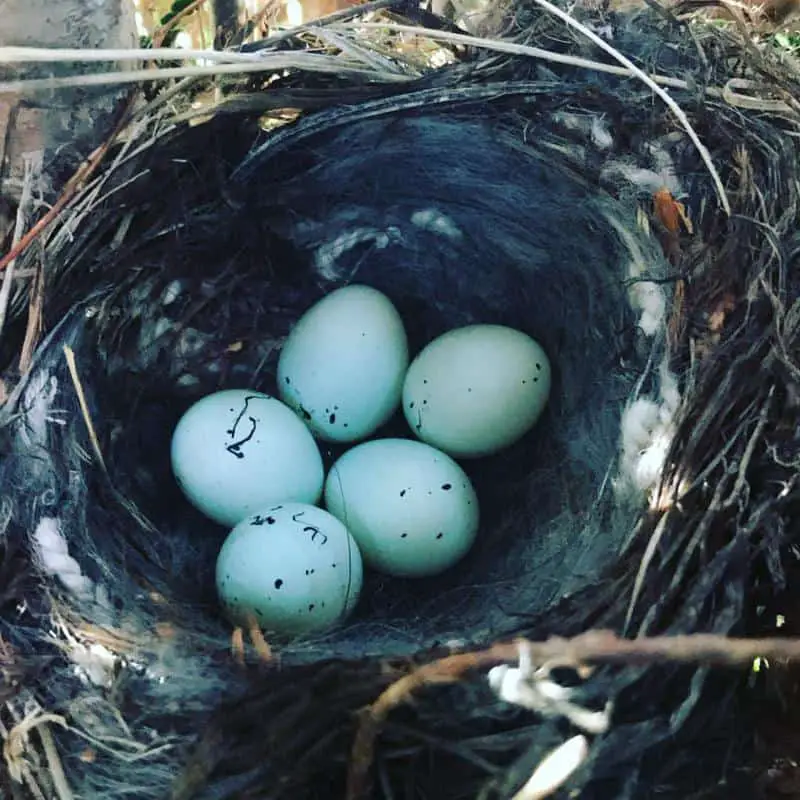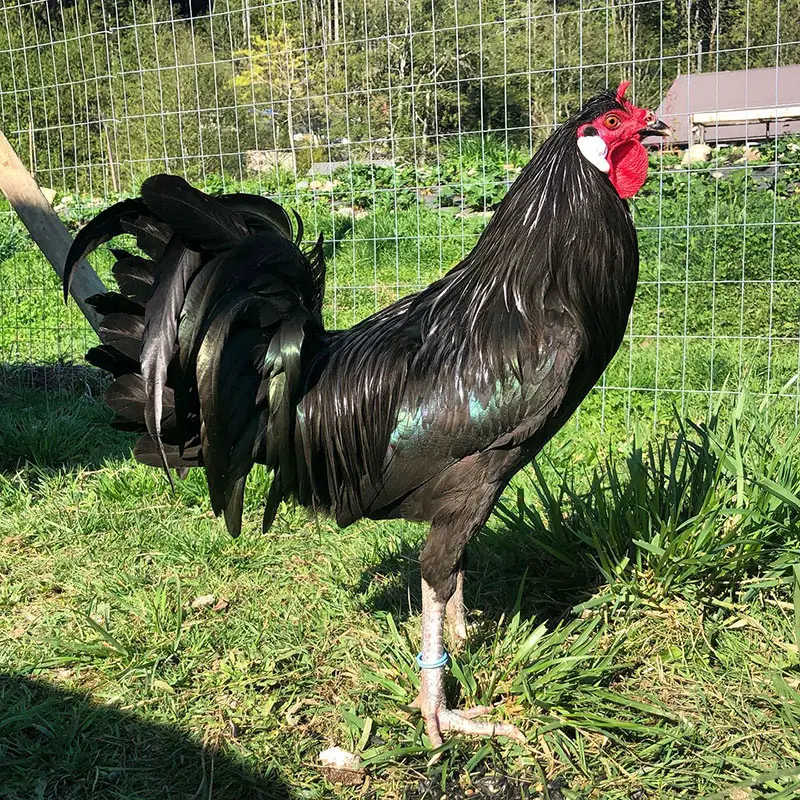You may be wondering whether birds ever consider one another to be food sources when you see them congregating in your garden. It might be unexpected to think about birds preying on one another. Other birds do, however, regularly comprise a portion of the diets of some species.
If you’re pressed for time, here’s a brief rundown: Indeed, several bird species are predators and feed on other bird species. These include predatory birds such as eagles, hawks, and owls, which hunt, kill, and devour other birds as part of their normal life cycle. Continue reading to find out more.
Eagles that Eat Birds of Prey
Eagles are magnificent raptors renowned for their exceptional hunting abilities. Although fish is the primary food source for most eagles, they are opportunistic hunters and have also been known to consume other birds. There have been reports of several bigger eagle species, such the African Crowned Eagle, hunting and feeding on smaller birds, including other raptors.
Hawks
Another category of predatory birds that are known to eat other birds is the hawk. Their large beaks and keen talons let them to hunt with agility, which makes them ideal for catching and devouring their bird prey.
Hawks often hunt smaller birds, such pigeons or sparrows, and will dive down from the skies to surprise them.
Falcons
Falcons are well known for their amazing speed and skill in aerial maneuvers. These predatory birds can dive at amazing speeds during their hunts, making them exceptionally skilled predators. Although small animals make up the majority of their food, falcons also hunt birds, including pigeons, doves, and even other falcons.
Owls
Being nocturnal hunters, owls have evolved to be able to locate and seize their prey at night. Although tiny animals like mice and rats make up the majority of their diet, owls have also been seen to consume birds.
Their quiet flying and keen claws enable them to effectively surprise and seize their bird prey.
For further details on prey birds that eat birds, go to https://www.audubon.org or https://www.birdwatchersdigest.com.
How Predatory Birds Take Down and Kill Other Birds
A group of carnivorous birds known as raptors, or birds of prey, have developed specialized hunting skills to capture and kill other birds. To catch their prey, these formidable predators depend on their extraordinary vision, dexterity, and keen claws.
Bending Down From Above
Stooping is a frequent hunting method employed by predatory birds. This entails the raptor taking off in the sky and swiftly descending to its prey. Stoop speed may reach amazing heights; certain predatory birds have been known to reach above 200 mph.
The predator may increase the likelihood of a successful hunt by surprising and catching its victim off guard with this fast-moving plunge.
The peregrine falcon, the fastest bird in the world, is one of the birds that uses the stooping method. The peregrine falcon is a dangerous aerial predator with its sleek body and strong wings that allow it to make accurate and lethal dives.
Unexpected Ambush Attacks
Ambush assaults are a tactic used by predatory birds to capture other avian species. These hunters will often sit in a high spot and watch their surroundings carefully. When they see anything that could be food, they lunge in its direction, using the element of surprise to their advantage.
The unwary bird is caught off guard by this ambush strike and has little time to respond or flee.
The bald eagle is one bird that employs this method of hunting. The bald eagle is a common sight near bodies of water, poised in trees, waiting for a chance to dive down and use its strong claws to grab a fish from the surface.
The victim of these surprise strikes is sometimes taken totally off guard because of how precisely they are carried out.
Killing and carrying talons
Predatory birds’ main tool for capturing and murdering other birds is their talons. Their prey is kept from fleeing by being grasped and held onto by their pointed, curved claws. Additionally, the talons are powerful enough to puncture through the flesh of the target, guaranteeing a quick and efficient murder.
After capturing its victim, the predatory bird will use its talons to transport the food to a secure area where it may eat it undisturbed. The raptor’s powerful talons enable it to carry prey that may be heavier or bigger than it is.
Reasons Why Birds Eat Other Birds
Most people associate birds with lovely melodies, elegant flying, and vibrant plumage. Some people may be surprised to learn that some birds really feed on other birds, however. For a number of reasons, different bird species engage in this activity, which is referred to as bird-on-bird predation.
Origin of Meat
The need to have a supply of meat is one of the key motivations for birds to hunt on other birds. While insects, seeds, and nectar are the main sources of food for many birds, certain species have evolved to be carnivorous.
These species, which include raptors like eagles, hawks, and owls, are able to catch and kill other birds because to their keen beaks and talons. They provide a consistent source of food high in protein for themselves and their young by preying on other birds.
Defense of Territory
Birds are very territorial animals, and they will stop at nothing to keep others away from their breeding and feeding grounds. Sometimes, in order to defend their resources and territory, birds may hunt on other birds.
Through eradicating any adversaries or competitors, they may ensure their own survival and boost the likelihood of successful reproduction. Some bird species that are renowned for their aggressiveness, such shrikes and kingbirds, are especially prone to this territorial behavior.
Taking Out the Competition
In the world of birds, competition for few resources, including food and nesting locations, may be fierce. To get rid of competition, some birds turn to preying on other birds. They improve their own chances of survival and successful reproduction by lowering the number of people vying for the same resources.
Many bird species, including gulls, herons, and even some smaller songbirds, have been seen to exhibit this phenomena.
While certain birds do prey on other birds, it’s vital to remember that this behavior is not common among all birds. Numerous bird species live in harmony with one another and depend on various habitats, food supplies, and survival techniques.
Reputable websites like Audubon or All About Birds provide more tools and information if you’re interested in learning more about bird behavior and predation.
The Most Vulnerable Avian Species to Bird Predation
Birds are often thought of as having beautiful plumage, melodic melodies, and elegant flying. certain people may be surprised to learn that certain bird species are known to feed on their fellow feathered companions.
There are certain bird species that are more inclined than others to behave predatorily against other birds, even if not all birds display this behavior.
Tiny Songbirds
Larger predatory birds often pursue small songbirds, including warblers, finches, and sparrows. Because of their tiny size and agility, these birds are more easily preyed upon by raptors such as owls, falcons, and hawks.
With their excellent vision and strong talons, these raptors can catch their prey quickly while they’re pursuing an airborne target. tiny songbirds, despite their tiny size, are vital to the ecosystem’s equilibrium and may have a big influence on local bird populations via predation.
Doves and Pigeons
Commonly prevalent in urban settings, pigeons and doves are equally vulnerable to predatory birds. Even though pigeons and doves are renowned for their capacity to adapt to a variety of habitats, bigger birds still pursue them.
Predatory birds have been seen grabbing pigeons and doves from roofs or in midair, including falcons and hawks. It is possible to interpret this predation as nature’s method of controlling the number of these birds that live in cities.
Geese and Ducks
Ducks and geese are examples of waterfowl that are not immune to predators. These birds are not impervious to predators, even with the safety offered by their water surroundings and size. Eagles, herons, and even bigger gulls are among the birds that attack on wounded adult ducks and geese, as well as ducklings.
Furthermore, certain bird species—like the peregrine falcon, for example—have a reputation for having exceptional hunting skills and can even catch ducks with their swift dives.
It is crucial to remember that bird predation is a normal component of the ecosystem and that it helps to keep the various bird populations in balance. Conservationists and bird lovers may create plans to safeguard fragile bird populations and advance biodiversity by having a better understanding of which avian species are prone to bird predation.
A few exceptions include hummingbirds and birds that don’t eat other birds.
A good example of a bird that doesn’t consume other birds are hummingbirds. These microscopic organisms ingest mostly nectar from flowers, with insects making up a very small portion of their diet. The large tongues and beaks of hummingbirds are designed especially to reach deep into blooms and get nectar.
Sweet fruits, tree sap, and flower nectar make up the majority of their diet. Hummingbirds do not hunt other birds, while being aggressive protectors of their own territory.
The Woodpeckers
Another exception to the rule that birds consume other birds is the woodpecker. These amazing birds are mostly insectivorous, drilling into tree bark with their powerful beaks to retrieve insects that are concealed inside.
They can capture insects in the nooks and crannies of trees thanks to a unique tongue that is long and sticky. In addition, berries, nuts, and fruits are consumed by woodpeckers, particularly in the winter when insects are less common.
Although they could act aggressively and with territoriality, woodpeckers do not hunt or eat other kinds of birds.
Scavengers
Because they consume carrion, or dead animals, scavengers like vultures and crows are vital to the environment. These birds can rip through thick animal skin and muscle thanks to their powerful beaks and keen talons.
Rather of actively seeking live animals, their main source of food is corpses that they locate. For example, vultures can detect carrion at a vast distance because to their superb sense of smell and sharp vision.
Conversely, crows are very smart and adaptive, and they utilize their ability to solve puzzles to find food. Scavengers don’t usually hunt and eat live birds, however they could feast on the carcasses of other creatures.
There are outliers within each species, despite the fact that these birds do not consume other birds. For instance, in times of food scarcity, some woodpecker species may occasionally eat the eggs or nestlings of other bird species.
These occurrences are uncommon, however, and do not reflect their diet in its whole.
You may visit reliable websites like Audubon or All About Birds to learn more about different bird species and their diets.
Final Thoughts
Even while not every bird species feeds on other birds, many predatory birds depend on hunting smaller birds for their own food. This emphasizes how food chains in natural systems are cyclical.
It might be startling to see a hawk swoop down and pick up an unwary songbird, but it’s a crucial reminder that many species—including those that are feathered—face predation on a regular basis!





